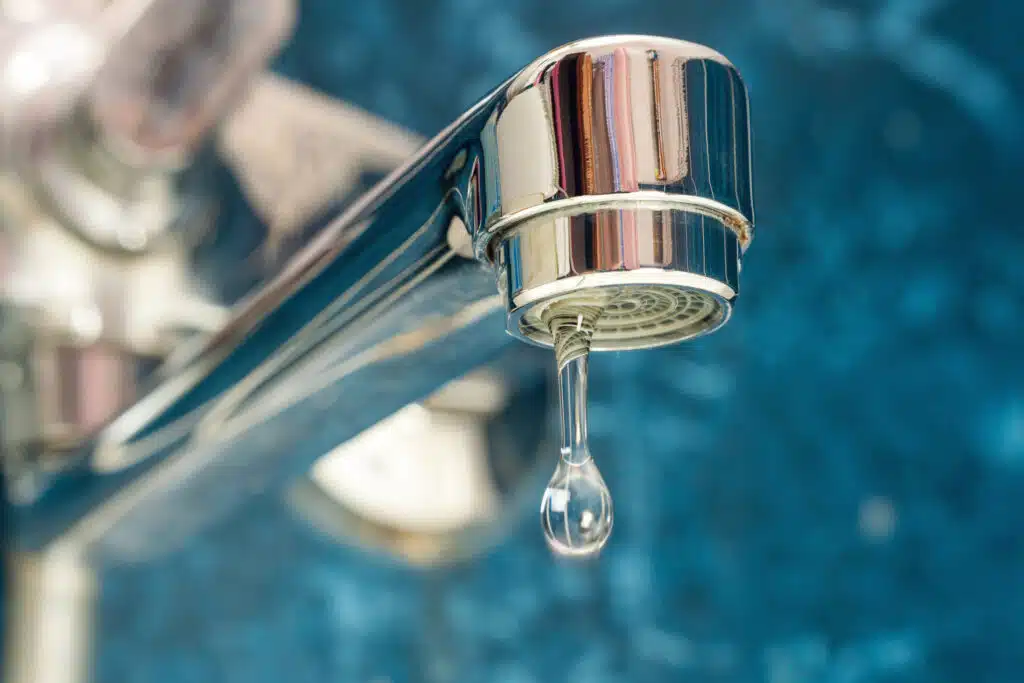Lancaster relies on hidden underground rivers, or aquifers, for much of its water supply. These rivers flow through limestone and rock, naturally filtering water but also picking up minerals, bacteria, and potential pollutants from agriculture and urban runoff. They feed into wells and springs, providing a crucial water supply, but their quality and levels can fluctuate with rainfall and seasonal changes. Regular monitoring and proper management are essential to maintain a safe water supply for Lancaster homes, ensuring it remains clean and reliable despite these underground rivers’ hidden nature.

Did you know that Lancaster’s water supply has a hidden secret? Beneath the city lies a network of underground rivers that quietly flow beneath our feet, playing a major role in how we get our water.
These hidden waterways aren’t just mysterious—they’re crucial for our everyday lives, providing the water we drink, cook with, and use around the house.
But what exactly are these underground rivers, and how do they affect your water supply? Let’s explore the fascinating world of Lancaster’s underground rivers and their impact on your daily life!
What Are Underground Rivers?
Underground rivers are like nature’s hidden plumbing system, flowing beneath the surface through cracks, tunnels, and spaces in rock formations.
Unlike the rivers you can see, these waterways are completely hidden, winding their way through the earth and moving water from one place to another, sometimes over long distances.
When it rains, water seeps through the ground, filling these underground rivers, which are also known as aquifers. They can move slowly, taking years or even decades to travel just a few miles.
But despite their slow pace, underground rivers play a vital role in the water cycle, feeding into wells, lakes, and even the surface rivers that we’re more familiar with.
These hidden rivers are important because they help supply fresh water for drinking, farming, and everyday use.
Without them, many areas, including Lancaster, would struggle to maintain a reliable water supply. So next time you enjoy a cool glass of water, think about the journey it might have taken through these underground rivers right below your feet!
Lancaster’s Underground Rivers
Overview of Lancaster’s Geography
Lancaster, PA, has a unique geography featuring a network of underground rivers flowing through limestone and other rocks. This area’s karst landscape, characterized by caves, sinkholes, and hidden waterways, allows rainwater to seep underground.
The limestone rock absorbs and directs the water, creating these underground channels. These rivers play a crucial role in feeding Lancaster’s wells, springs, and surface water bodies like the Conestoga River.
Importance of These Rivers
Lancaster’s underground rivers are essential for the community’s water supply, acting as natural reservoirs that store water. They ensure a steady supply even during dry periods when surface water might be scarce.
As water travels through the rock, it undergoes a natural filtration process, improving water quality. This natural system supports Lancaster’s agriculture and daily water needs, maintaining a healthy balance for the ecosystem.
How Underground Rivers Affect Your Water Supply
Source of Drinking Water
Underground rivers are a primary source of drinking water in Lancaster, as they feed into wells and springs that supply homes and businesses. Water from these hidden rivers is often drawn up through wells, filtered, and then distributed as tap water.
This natural supply is crucial, especially in areas where surface water sources might be limited or inconsistent. The reliability of underground rivers helps ensure that residents have access to clean, fresh drinking water year-round.
Impact on Surface Water Bodies
Underground rivers don’t just flow invisibly below; they also have a direct impact on surface water bodies. These rivers feed into local streams, lakes, and rivers, helping to maintain water levels, especially during dry periods.
This connection supports the overall health of Lancaster’s aquatic ecosystems, providing a steady flow of water to surface habitats.
The constant exchange between underground and surface water bodies helps keep the environment balanced and supports both human and wildlife needs.
Water Quality Considerations
Water quality in underground rivers can vary depending on natural and human influences. As water moves through underground channels, it can pick up minerals and other substances from the surrounding rock.
While some of this natural filtration is beneficial, the presence of pollutants like agricultural runoff can affect water quality. Understanding and managing these factors is crucial to ensuring that the water drawn from underground rivers remains safe for consumption and use.
Seasonal Changes and Water Levels
Seasonal changes can significantly impact the flow and levels of underground rivers. During wet seasons, rainwater replenishes these rivers, increasing water levels and flow rates.
Conversely, during dry periods or droughts, the levels can drop, affecting the availability of water. This fluctuation requires careful management to ensure that Lancaster’s water supply remains stable throughout the year.
Monitoring these changes helps local authorities plan for periods of lower water availability and adjust usage accordingly.

Potential Contaminants in Underground Rivers
Underground rivers may seem like pristine water sources, but they can carry various contaminants, both natural and human-made, that impact water quality and safety. Understanding these contaminants is crucial for maintaining a healthy water supply.
Natural Contaminants
Natural contaminants in underground rivers can come from the rocks and soil they flow through. These contaminants, while naturally occurring, can still pose risks if present in high concentrations or if left unmanaged. Key natural contaminants include:
- Minerals and Heavy Metals: Minerals like calcium and magnesium contribute to water hardness, while heavy metals such as iron, manganese, and occasionally lead can dissolve into the water from surrounding rocks. High concentrations of heavy metals can be harmful and require regular monitoring to keep water safe for consumption.
- Biological Contaminants: Bacteria and viruses can enter underground rivers from sources like soil or decaying organic matter. These biological contaminants pose health risks, making proper water treatment and testing critical for safe consumption, especially for vulnerable populations.
- Radon and Other Radioactive Elements: Radon, a naturally occurring radioactive gas, can dissolve into underground water from rocks. Although usually present in low levels, high concentrations of radon can be dangerous, necessitating monitoring and potential filtration to ensure water remains safe.
These natural contaminants highlight the importance of ongoing water testing and treatment to keep underground water sources safe for daily use.
Human-Caused Contaminants
Human activities can introduce a range of contaminants into underground rivers, often with more immediate and severe impacts on water quality than natural sources. These contaminants arise from various aspects of human life and industry. Key human-caused contaminants include:
- Agricultural Runoff: This runoff often contains fertilizers, pesticides, and animal waste, which can seep into underground rivers. These contaminants can lead to nutrient pollution and harmful algal blooms, which affect both water quality and the broader ecosystem that relies on this water.
- Industrial Discharges: Industrial activities can release pollutants such as heavy metals and toxic chemicals into underground rivers. These discharges pose significant risks to water quality, necessitating strict regulation and monitoring to prevent harmful levels of contamination.
- Urban Runoff: Urban runoff includes pollutants like oil, grease, and trash from streets, which can easily enter underground water systems. This runoff degrades water quality and introduces harmful substances that are difficult to remove, impacting both human health and the environment.
- Leaking Sewer and Septic Systems: Leaks from sewer and septic systems can release harmful bacteria, viruses, and excess nutrients into underground rivers. These contaminants pose serious health risks and emphasize the need for proper maintenance and monitoring to prevent contamination.
Managing these human-caused contaminants requires coordinated efforts between individuals, industries, and local authorities to protect the quality of Lancaster’s underground water sources.
Impact of Contaminants on Water Quality and Supply
Contaminants in underground rivers can have far-reaching effects on water quality and availability. From health concerns to environmental damage, the presence of these pollutants underscores the importance of monitoring and protecting our water sources.
Health Implications
Contaminated water can pose serious health risks to the community. Exposure to heavy metals, bacteria, viruses, or chemicals from agricultural and industrial runoff can lead to a variety of health issues, ranging from gastrointestinal problems to long-term conditions like cancer.
Children, the elderly, and those with compromised immune systems are particularly vulnerable to these contaminants. Ensuring that water is properly treated and regularly tested is essential for protecting public health and maintaining a safe water supply for all.
Ecological Impact
The impact of contaminants extends beyond human health, affecting local ecosystems as well. Polluted underground rivers can degrade habitats for fish, plants, and other wildlife, disrupting food chains and harming biodiversity.
Nutrient pollution from agricultural runoff can lead to algal blooms that deplete oxygen in water bodies, creating dead zones where aquatic life cannot survive.
Protecting the health of these underground rivers is crucial not just for people but also for the broader environment that depends on clean, healthy water.
Economic Consequences
The economic effects of contaminated water supplies can be significant, impacting everything from agriculture to property values. Contamination can lead to costly water treatment processes, increased healthcare expenses, and reduced agricultural productivity due to poor-quality irrigation water.
Additionally, communities may face expensive infrastructure repairs or upgrades to prevent further contamination, putting a financial strain on local governments and residents alike. Investing in preventative measures and water protection efforts can help mitigate these economic impacts.
Long-Term Sustainability Concerns
The long-term sustainability of Lancaster’s water supply depends on managing and reducing contamination risks. Over time, persistent pollution can degrade underground rivers, reducing their ability to provide clean water and threatening the overall availability of this critical resource.
Sustainable water management practices, including conservation, pollution prevention, and regular monitoring, are essential to ensuring that these underground rivers can continue to support the community’s needs for generations to come.
Protecting Lancaster’s Underground Water Supply
Protecting Lancaster’s underground water supply is essential to ensure a safe and reliable source of water for the community. By taking proactive steps to conserve water and prevent pollution, we can safeguard these hidden rivers and maintain the quality of our water supply for years to come.
Water Conservation Efforts
Water conservation is one of the most effective ways to protect Lancaster’s underground water supply. Simple actions, such as fixing leaks, using water-efficient appliances, and reducing water waste in daily activities, can make a significant difference.
Every drop saved helps maintain the levels of underground rivers, ensuring a consistent water supply even during dry periods. Community-wide efforts, such as water-saving campaigns and incentives for using less water, can collectively reduce the strain on our underground resources.
Preventing Pollution
Preventing pollution is critical to maintaining a clean water supply. This involves reducing the use of harmful chemicals in agriculture, managing waste responsibly, and ensuring that industrial discharges are properly treated before they reach the ground.
Individuals can also contribute by properly disposing of household chemicals, avoiding overuse of fertilizers and pesticides, and supporting local initiatives that aim to keep Lancaster’s water supply clean.
By preventing pollutants from entering the ground, we can protect the health of our underground rivers and, in turn, our overall water supply.
Monitoring and Testing
Regular monitoring and testing of Lancaster’s underground water sources are crucial for detecting and addressing contamination early. Local authorities conduct water quality tests and manage pollutants to ensure that water remains safe for everyone.
This ongoing vigilance helps protect public health and ensures that the community’s water needs are met without compromising safety.
Homeowners can also participate by testing their own water, especially if they rely on private wells connected to underground rivers. By staying informed about water quality, everyone can contribute to maintaining a safe and reliable water source.
The Role of Local Authorities and Plumbers
Local authorities and plumbers play a crucial role in managing and protecting Lancaster’s underground water supply. From monitoring water quality to addressing issues in your home, these professionals are key to ensuring that everyone has access to safe and reliable water.
Managing Water Resources
Local authorities are responsible for overseeing Lancaster’s water resources, including the underground rivers that supply much of the area’s water. They conduct regular testing, enforce regulations to prevent pollution and manage water conservation initiatives to maintain a sustainable water supply.
By monitoring water levels and quality, they help protect against potential threats, such as contamination or overuse, which could jeopardize Lancaster’s water supply. Their efforts ensure that the community continues to have access to clean, safe water.
Plumbers’ Role in Water Safety
Plumbers are the front line when it comes to maintaining the safety and functionality of your water supply at home. They handle everything from fixing leaks to installing water filtration systems that can remove contaminants from your drinking water.
By addressing issues like backflow or outdated plumbing that could introduce harmful substances into your water, plumbers help protect the integrity of your home’s water supply.
Their expertise ensures that the water flowing into your taps meets safety standards and is free from contaminants that could pose health risks.
When to Call a Professional
It’s important to know when to call a professional to protect your water supply. If you notice changes in your water quality—such as an unusual taste, color, or smell—or if your water pressure drops significantly, it’s time to call a plumber.
They can assess and address any potential issues, ensuring your water remains safe. Additionally, if you rely on a private well, regular testing and maintenance by a professional are essential to keep your water supply in good condition.
Keep Your Water Clean and Safe with Expert Help!
Worried about the quality of your water in Lancaster? Don’t take chances with your family’s health. At Benjamin Franklin Plumbing of Lancaster, we specialize in protecting your home’s water from contaminants found in underground rivers.
Our experienced team is ready to ensure your water is clean and safe. Contact us today to schedule a professional water quality assessment and enjoy peace of mind knowing your water is in good hands!
Frequently Asked Questions
What should I do if I notice changes in my water quality?
If you notice changes in the taste, color, or smell of your water, it’s important to act quickly. Contact a professional plumber to inspect your plumbing system and conduct a water quality test. This will help identify any contaminants and ensure your water remains safe for use.
How can I learn more about Lancaster’s water sources?
Local authorities often provide resources and updates about the water on their websites or through community meetings. You can also reach out directly to the local water department for detailed information about Lancaster’s underground rivers and their impact.
Are there any current advisories about water safety in Lancaster?
Safety advisories are typically issued by local authorities when there’s a potential risk. These can include boil water notices or warnings about specific contaminants. Keep an eye on local news, official websites, or community bulletins for the latest updates on water safety.
How often should water be tested in Lancaster homes?
For homes connected to a public system, regular testing is managed by local authorities. However, if you have a private well, it’s recommended to test your water at least once a year. Testing more frequently may be necessary if there are known risks or changes in quality.
What are the signs of water contamination?
Signs of contamination can include changes in taste, color, or smell, as well as any visible particles or sediment in the water. Health symptoms, such as gastrointestinal issues after drinking, can also indicate contamination. If you suspect a problem, it’s best to stop using the water immediately and seek professional testing.





















